CODE GIRLS UNITEd
Montana
In States ranked by Percentage of High Schools Offering Computer Science courses, Montana is ranked last.
A summary of proportion of female and male students taking CS electives as compared to the total population of high school students in Montana is as follows:
- Total CS Elective takers: 3.42%
- Total females as a proportion of the general student population: 0.77%
- Total males as a proportion of the general student population: 2.64%
Data provided by Code.org and the Montana Office of Public Instruction
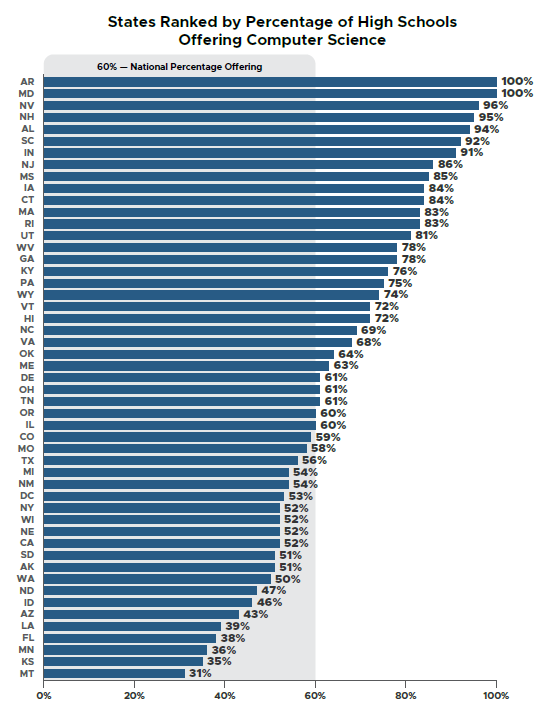
AAUW
According to the American Association of University of Women (AAUW), we can reverse this trend by removing negative connotations around women in computer science and engaging young girls at the elementary level.
AAUW found that targeting the 11-14 year old age range was critical for girls to pursue further education in computing and engineering. According to a meta-analysis of 440 other studies of K-12 students, studies show that learning computer programming improves student creativity, mathematical skills, metacognition, spatial skills, reading, and reasoning skills (Educational Psychology Journal, 2019) .

accenture for girls who code
The problem starts in the classroom:
The challenges we face originate in school, where too few girls are pursuing studies in computing and related subjects. According to the American Association of University Women, in recent years only 20% of Advanced Placement (AP) computer science exam takers in high school have been female, compared to 48% for calculus, 59% for biology, and 34% for physics. And the proportion of female students majoring in computing in college is not just low – it has fallen dramatically. In 1984, 37% of computer science majors in the U.S. were women. Today, only 18% are.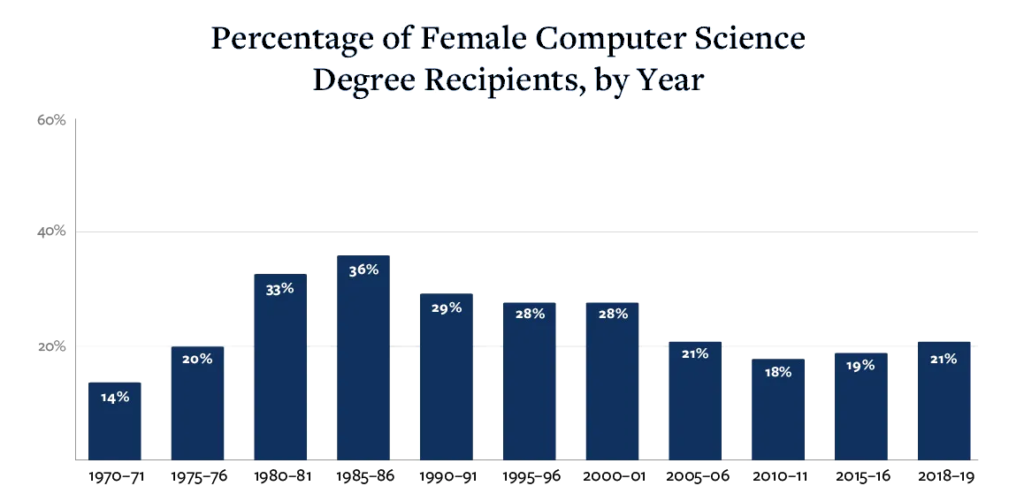
Catching girls early in junior high school:
According to our research, 69% of the growth in the computing pipeline would come from changing the path of the youngest girls – especially those in junior high school. As Figure 1 shows, experience of computing in their junior high years means that girls are 18% more likely to show interest in computing throughout their high school and college years.
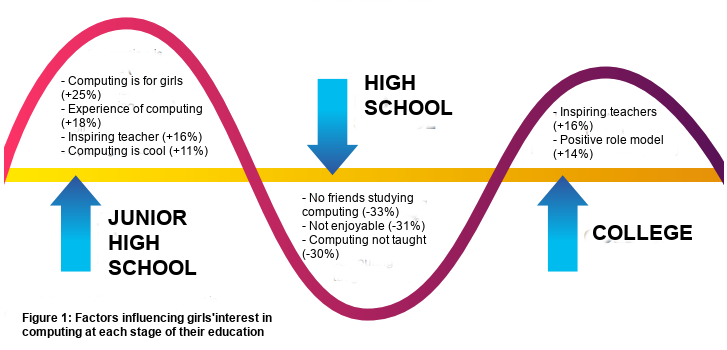
Where girls are exposed to computing/coding:
Schools can learn from the summer camp experience. We found that 81% of high school girls who studied computing over the summer were interested in studying computing at college, compared to 52% of those who only studied computing at school.
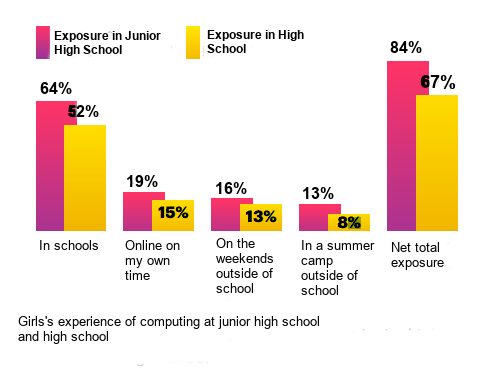
The positive impact of these changes could be amplified still by repositioning computing courses to align them with girls’ interest in problem solving and making the world a better place. This would involve placing less emphasis on theory in coursework. Right now, a far larger proportion of high school girls (33%) say that they do not enjoy computing classes compared to junior high girls (15%). So it is vital that our schools and teachers show girls that pursuing computer science is one way that they as individuals can make a real impact on the world.
(Accenture Research Report for Girls Who Code, 2018)
